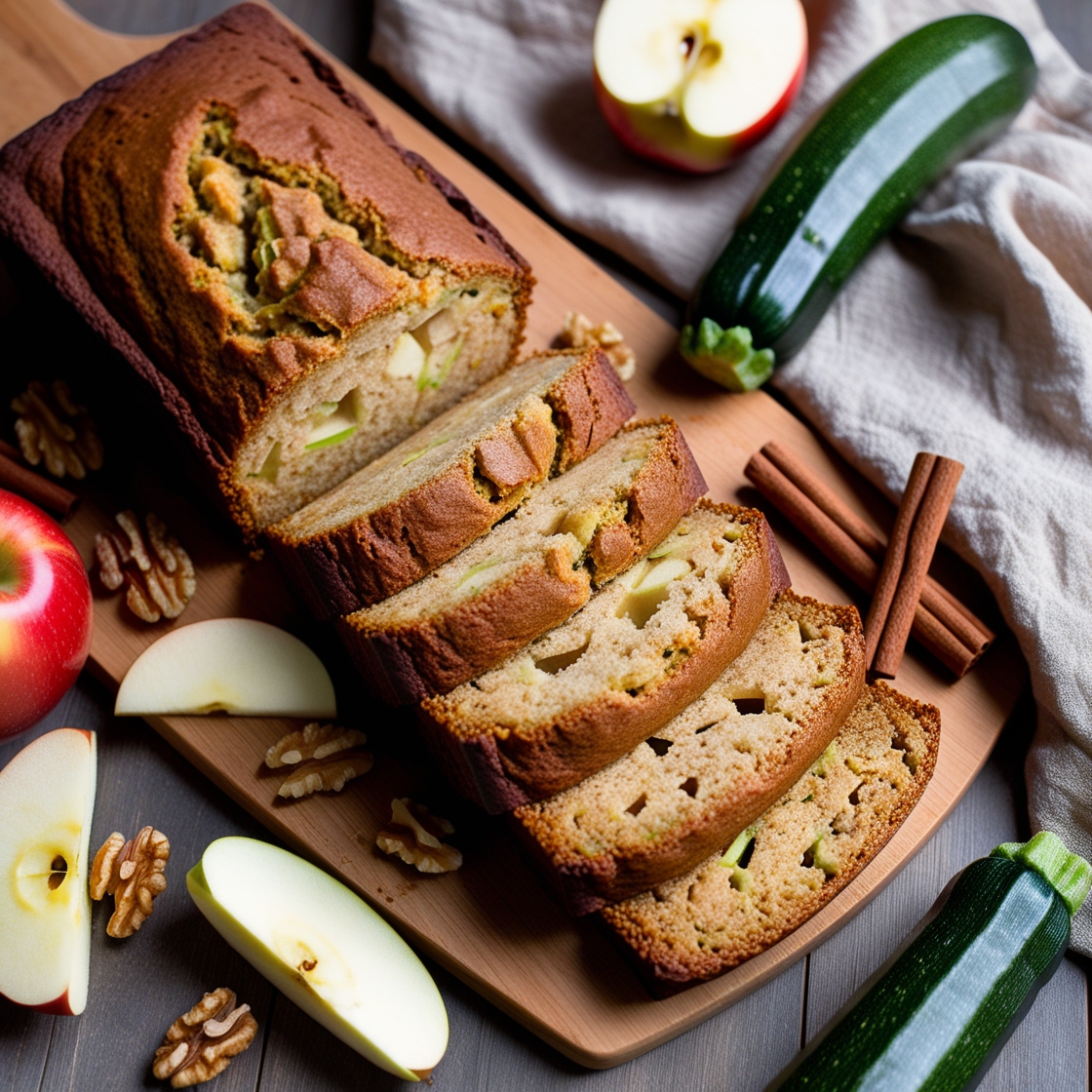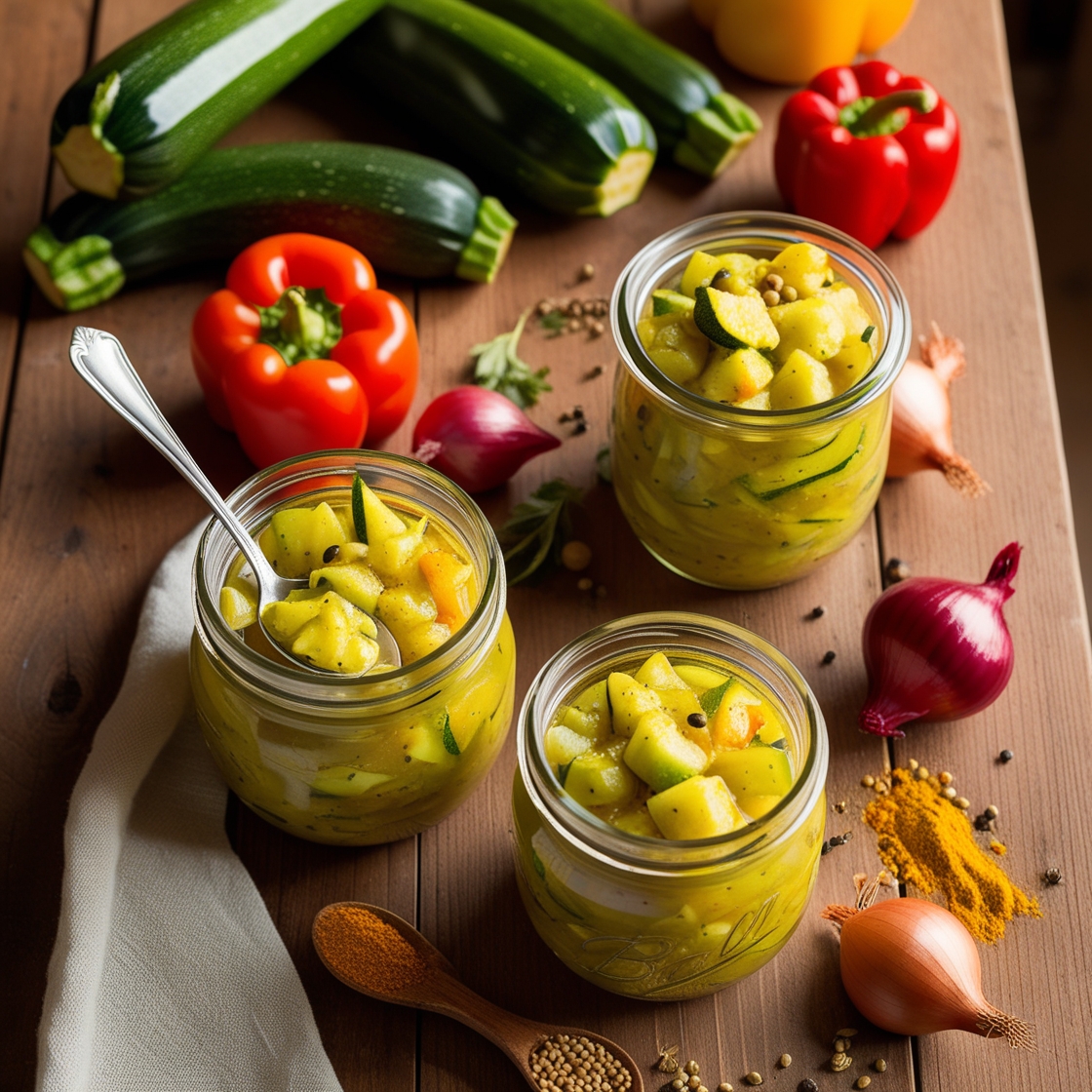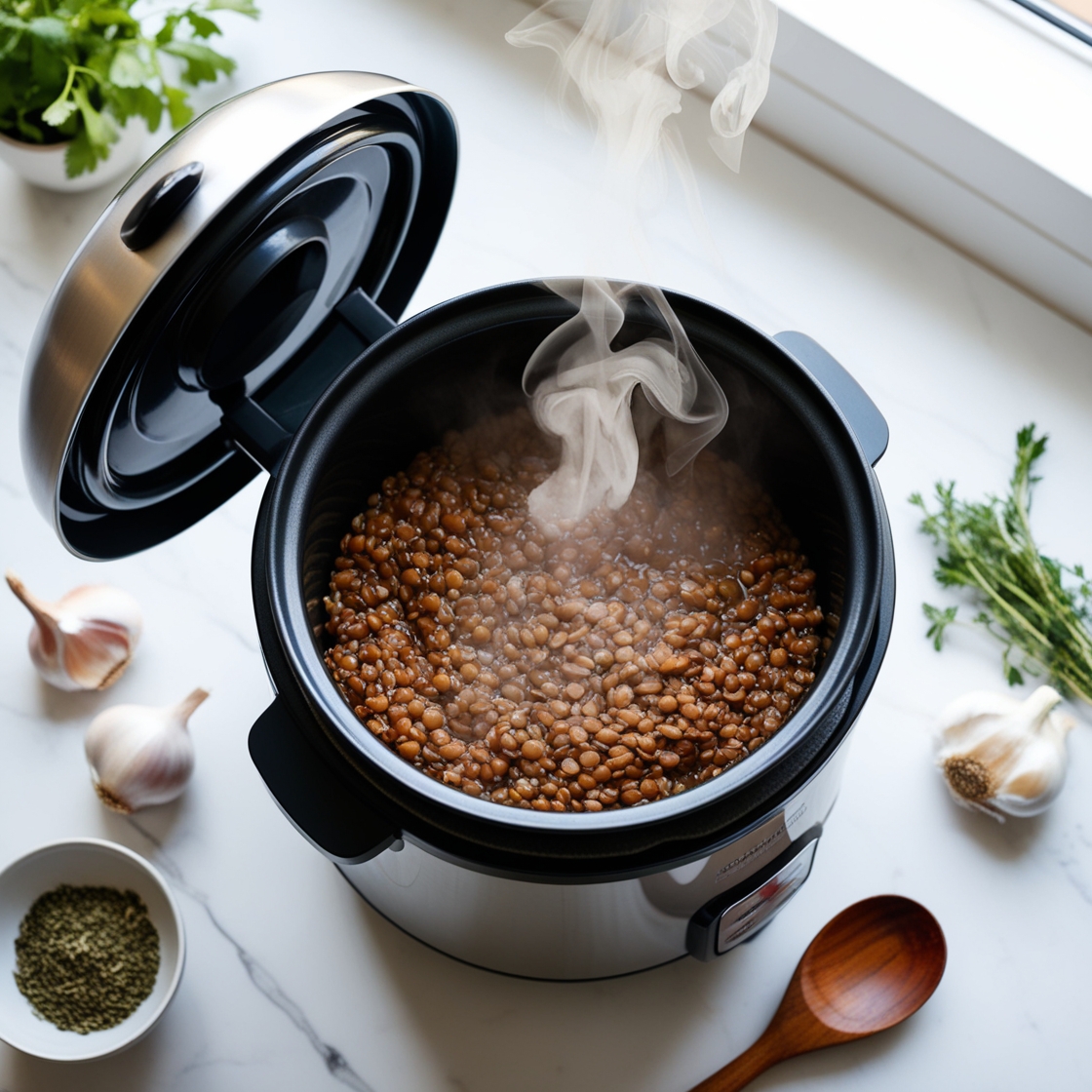Every September, my garden produces more zucchini than I know what to do with. Those few plants I tucked into the soil in May become prolific by late summer, and suddenly I’m searching for creative ways to use them all. That’s when I rediscovered apple zucchini bread—a recipe that transformed my view of healthy baking entirely. This isn’t your typical quick bread loaded with refined sugar and oil. Instead, it’s a wholesome loaf that celebrates seasonal produce while delivering serious nutritional benefits.
The combination of shredded zucchini and diced apples creates incredible moisture without excess fat, while whole grain flour and natural sweeteners keep it aligned with my plant-based lifestyle. I’ve baked dozens of loaves over the years, tweaking and perfecting until I landed on a version that my family requests constantly. What started as a solution to garden surplus became one of my most cherished recipes—proof that healthy eating doesn’t require sacrifice.
The Science Behind Apples and Zucchini in Baking
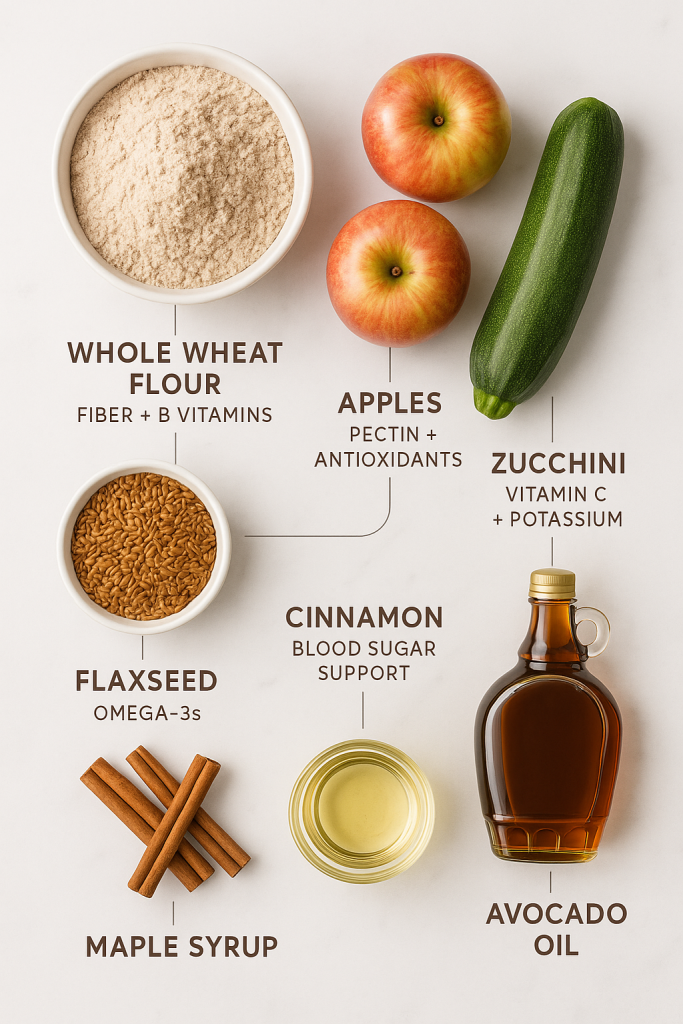
When I first considered combining these two ingredients, I wondered if they’d complement each other or compete. The answer surprised me. Zucchini brings exceptional moisture to baked goods without adding any distinct flavor—it practically disappears into the batter while keeping the crumb tender for days. Its high water content means I can significantly reduce added fats without sacrificing texture. Apples, meanwhile, contribute natural sweetness, subtle tartness, and lovely texture pockets throughout each slice. They also contain pectin, which helps bind ingredients together and creates structure.
The nutritional synergy is equally impressive. Zucchini provides vitamin C, potassium, and fiber with minimal calories. Apples add their own fiber, particularly pectin, along with antioxidants and additional vitamin C. Together, they create a bread that feels indulgent while secretly delivering a serving of fruits and vegetables. I’ve learned that grating the zucchini and dicing the apples to different sizes creates the best textural contrast—fine zucchini shreds integrate seamlessly, while small apple chunks provide delightful bursts of flavor and slight resistance when you bite into them.
Nutritional Powerhouse Ingredients
Let me break down what makes this recipe genuinely healthy, not just “healthier.” I use whole wheat pastry flour as my base, which retains the bran and germ that white flour processing removes. This means more fiber, B vitamins, and minerals in every slice. The fiber content is particularly important—it slows sugar absorption, promotes digestive health, and keeps you satisfied longer.
For sweetness, I rely primarily on the natural sugars from apples and a modest amount of maple syrup or coconut sugar. These unrefined sweeteners provide trace minerals and don’t spike blood sugar as dramatically as white sugar. Cinnamon does more than add warmth—it’s been shown to help regulate blood sugar levels and adds powerful antioxidants. Ground flaxseed serves as my egg replacement, bringing omega-3 fatty acids and additional fiber while creating perfect binding.
The minimal oil I include comes from avocado or light olive oil, both rich in heart-healthy monounsaturated fats. Unlike recipes calling for a full cup of oil or butter, mine uses just a quarter cup because the fruits provide ample moisture. Unsweetened applesauce further reduces fat needs while reinforcing the apple flavor. Each ingredient earns its place through both flavor contribution and nutritional value—nothing is there just to bulk up the batter.
My Perfected Healthy Apple Zucchini Bread Recipe
After years of testing, this is the version that never disappoints. It’s become my go-to for breakfast, snacks, and even dessert when I want something wholesome.
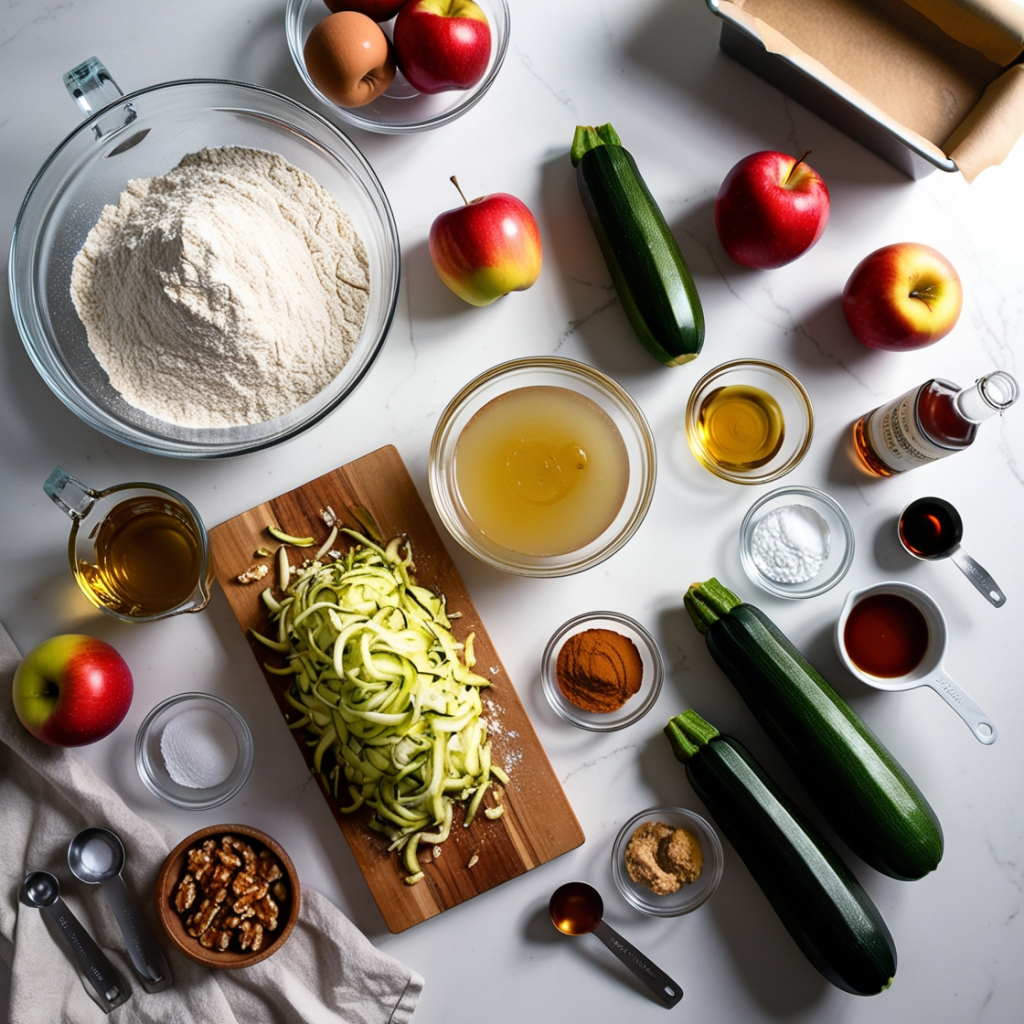
Dry Ingredients:
- 2 cups whole wheat pastry flour
- 1½ teaspoons baking powder
- ½ teaspoon baking soda
- ½ teaspoon sea salt
- 2 teaspoons ground cinnamon
- ½ teaspoon ground nutmeg
- ¼ teaspoon ground ginger
Wet Ingredients:
- 2 tablespoons ground flaxseed mixed with 6 tablespoons water (let sit 5 minutes)
- ⅓ cup maple syrup or coconut sugar
- ¼ cup avocado oil or light olive oil
- ½ cup unsweetened applesauce
- 2 teaspoons vanilla extract
- 1 teaspoon apple cider vinegar
Add-ins:
- 1½ cups shredded zucchini (about 1 medium, excess moisture squeezed out)
- 1½ cups diced apples (about 2 medium; leave peel on for fiber)
- ½ cup chopped walnuts or pecans (optional)
Instructions:
- Preheat oven to 350°F. Line a 9×5-inch loaf pan with parchment paper.
- Whisk all dry ingredients together in a large bowl.
- In a separate bowl, combine the flax mixture with maple syrup, oil, applesauce, vanilla, and vinegar.
- Pour wet ingredients into dry, stirring just until combined. Don’t overmix.
- Fold in shredded zucchini, diced apples, and nuts if using.
- Pour batter into prepared pan and smooth the top.
- Bake 55-65 minutes, until a toothpick inserted in the center comes out clean.
- Cool in pan 15 minutes, then transfer to a wire rack to cool completely.
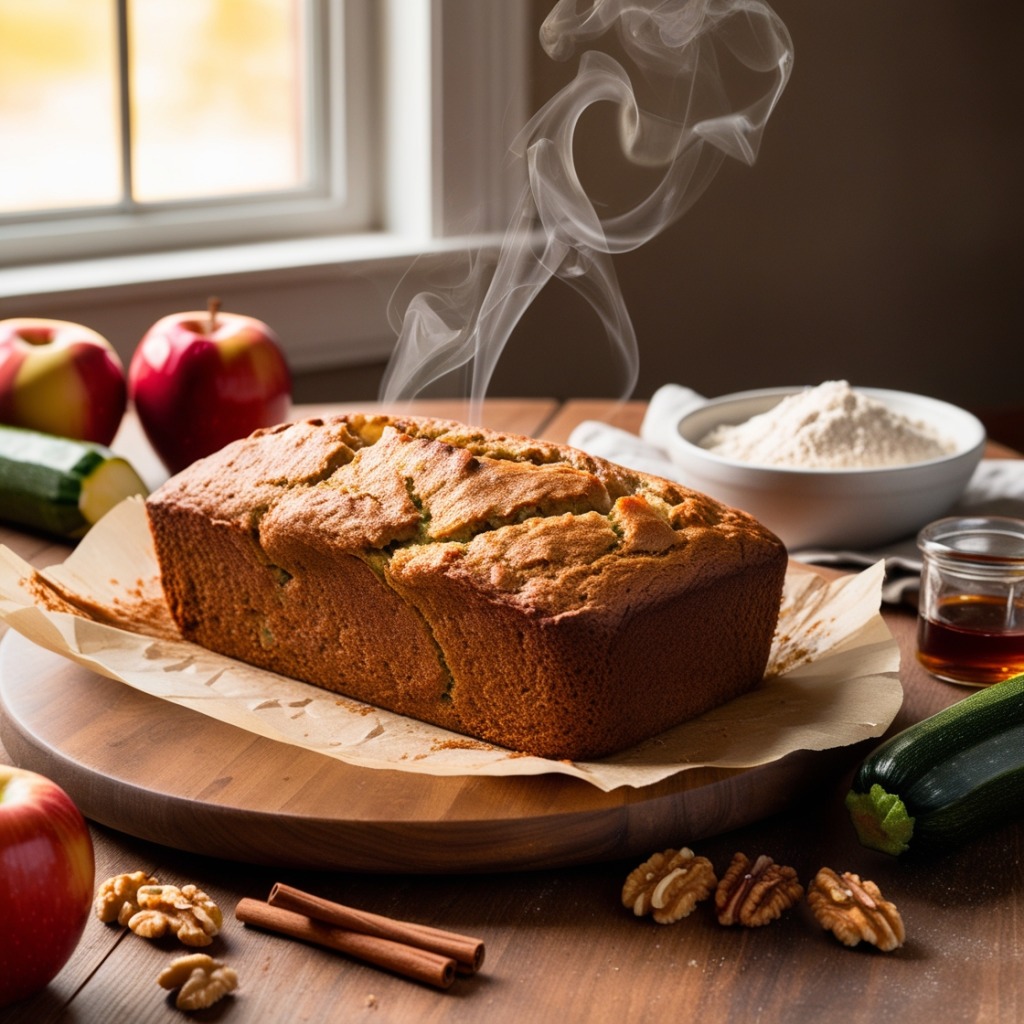
Techniques for Achieving Perfect Texture
The difference between mediocre quick bread and an exceptional loaf often comes down to technique. First, properly preparing your zucchini is critical. After shredding, place it in a clean kitchen towel and squeeze firmly over the sink—you’ll be amazed how much liquid comes out. While zucchini’s moisture is beneficial, too much creates a gummy texture. I aim to remove about half the liquid, leaving enough to keep the bread tender.
Mixing method matters tremendously. I combine dry ingredients thoroughly first, ensuring even distribution of leaveners and spices. When adding wet to dry, I stir just until no flour streaks remain—usually about 15-20 strokes. Overmixing develops gluten, resulting in tough, dense bread. The batter should look slightly lumpy, and that’s perfect. Folding in the fruits and nuts gently at the end preserves air bubbles that create lift.
Oven temperature and baking time require careful attention. If it’s too hot, the outside can burn before the inside cooks through. I’ve found 350°F to be ideal for even baking. Tent the loaf with foil during the last 15 minutes if the top browns too quickly. The toothpick test is reliable, but I also watch for slight pulling away from the pan’s sides and a springy top when gently pressed.
Customizing Your Loaf
One reason I return to this recipe constantly is its versatility. For nut-free versions, substitute seeds like sunflower or pumpkin—they add similar crunch and healthy fats. Gluten-free friends appreciate my adaptation using a quality all-purpose gluten-free blend; just add ½ teaspoon xanthan gum if your blend doesn’t include it.
Spice variations transform the flavor profile entirely. Try cardamom and orange zest for a sophisticated twist, or add crystallized ginger for spicy-sweet complexity. In summer, substitute blueberries for half the apples and reduce cinnamon. During holidays, I sometimes fold in dried cranberries and increase nutmeg.
For different dietary needs, the recipe adapts beautifully. Reduce maple syrup to ¼ cup for lower sugar content—the apples compensate. Oil-free versions work by replacing oil with additional applesauce, though the texture becomes slightly denser. Add-ins like hemp seeds, chia seeds, or cacao nibs boost nutrition without compromising moisture. I’ve successfully made mini loaves, muffins, and even a Bundt cake using this base recipe.
Smart Storage and Creative Serving Ideas
Proper storage extends this bread’s already impressive shelf life. At room temperature, wrapped tightly in plastic or stored in an airtight container, it stays moist for four days. Refrigeration extends this to a full week, though I prefer room temperature storage for optimal texture. For longer keeping, slice the cooled loaf, wrap individual pieces in plastic, then place in a freezer bag. Frozen slices thaw in minutes at room temperature or can be toasted directly from frozen.
I enjoy this bread in countless ways. Toasted with almond butter makes a satisfying breakfast that keeps me energized for hours. A thin smear of cashew cream cheese feels indulgent while remaining plant-based. For afternoon tea, I serve slices alongside fresh fruit and herbal tea. My kids love it in their lunchboxes—it’s sturdy enough to travel well and sweet enough to feel like a treat.
The bread also shines in recipes beyond simple slicing. Cube it for a healthy bread pudding, using plant-based milk and extra cinnamon. French toast made from slightly stale slices is phenomenal—the existing apple and zucchini flavors intensify. I’ve even crumbled it over plant-based yogurt with fresh berries for a breakfast parfait alternative.
Why This Recipe Matters for Plant-Based Living
This bread embodies everything I value about plant-based eating—it’s nourishing, accessible, and genuinely delicious. Too often, healthy recipes feel like compromises, as if we have to sacrifice taste for nutrition. This apple zucchini bread proves otherwise. It satisfies sweet cravings while delivering fiber, vitamins, minerals, and antioxidants. Made with whole, recognizable ingredients, it supports both personal health and environmental sustainability.
The recipe also demonstrates how plant-based baking doesn’t require specialty ingredients or complicated techniques. Ground flaxseed replaces eggs perfectly, creating binding and structure while contributing omega-3s. Whole grains provide complex carbohydrates that sustain energy rather than causing crashes. Natural sweeteners offer depth that refined sugar can’t match. Every component serves multiple purposes, creating efficiency in both nutrition and flavor.
I’ve shared this recipe with dozens of friends, including many who once doubted that “healthy baking” could taste good. Without exception, they’ve been converted. Several now bake it regularly for their own families. That’s the power of recipes that don’t force us to choose between health and enjoyment—they offer both in abundance.

Embracing Seasonal Abundance Through Baking
There’s something deeply satisfying about creating delicious food from seasonal surplus. Late summer and early fall bring both zucchini and apples into peak availability, making this the ideal time to bake. By utilizing these ingredients when they’re most abundant, I reduce food waste while enjoying produce at its freshest and most flavorful. My local farmers market vendors always smile when I arrive asking for their “ugly” apples and oversized zucchini—ingredients that might otherwise go unsold but work perfectly in baking.
This approach to cooking connects me to natural rhythms and local food systems. I’m not relying on imported ingredients or out-of-season produce. Instead, I’m celebrating what grows readily in my region during specific months. It’s a small act, but multiplied across many meals and many people, it contributes to more sustainable food practices.
The bread itself becomes a way to preserve abundance. I can freeze multiple loaves in September, then enjoy them through November when gardens lie dormant and markets offer less variety. Each slice recalls the warmth of late summer while nourishing me through cooler months. That connection between season, ingredient, and final dish creates meaning beyond simple nutrition.
Teaching Kids About Healthy Eating
One unexpected benefit of this recipe has been its role in teaching children about nutrition and cooking. Kids love helping shred zucchini and dice apples—tasks that develop motor skills while keeping them engaged. Baking together creates opportunities to discuss where ingredients come from, how they grow, and why they’re good for our bodies. It also naturally incorporates math practice, following instructions, and patience while waiting for the oven timer.
More importantly, children learn that healthy food can taste wonderful. They watch vegetables transform into something sweet and satisfying, which breaks down the artificial division between “kid food” and “health food.” When young ones request this bread for breakfast or want to pack it in their school lunches, it shows those lessons are taking root. They’re developing preferences for whole foods over processed alternatives without feeling deprived or restricted.
This bread has also sparked curiosity about other vegetables in baking. Families have experimented with carrot bread, beet brownies, and sweet potato muffins—all inspired by the success of incorporating vegetables into treats. These experiments teach flexibility and creativity in the kitchen while reinforcing that vegetables belong everywhere, not just in savory dishes.
The Role of Mindful Baking in Wellness
Beyond nutrition, the act of baking this bread contributes to my well-being. There’s a meditative quality to the process—measuring, mixing, waiting. In our rushed modern lives, baking requires presence. I can’t hurry the oven or skip steps without consequences. This forced slowness becomes a gift, creating space for reflection and calm.
The sensory experience is soothing as well. The sound of batter pouring into the pan, the warmth radiating from the oven, and the incomparable aroma of cinnamon and apples baking—all engage me fully in the moment. When life feels chaotic or overwhelming, baking grounds me. It’s a tangible act with a clear beginning, middle, and end—and a delicious reward to share with others.
Sharing homemade baked goods strengthens community bonds. Bringing a loaf to a neighbor, colleague, or friend communicates care in a profound way. Food, especially homemade food, carries meaning beyond its ingredients. It says, “I thought of you. I spent time creating something for you.” In an age of digital connection, these physical acts of generosity matter deeply.
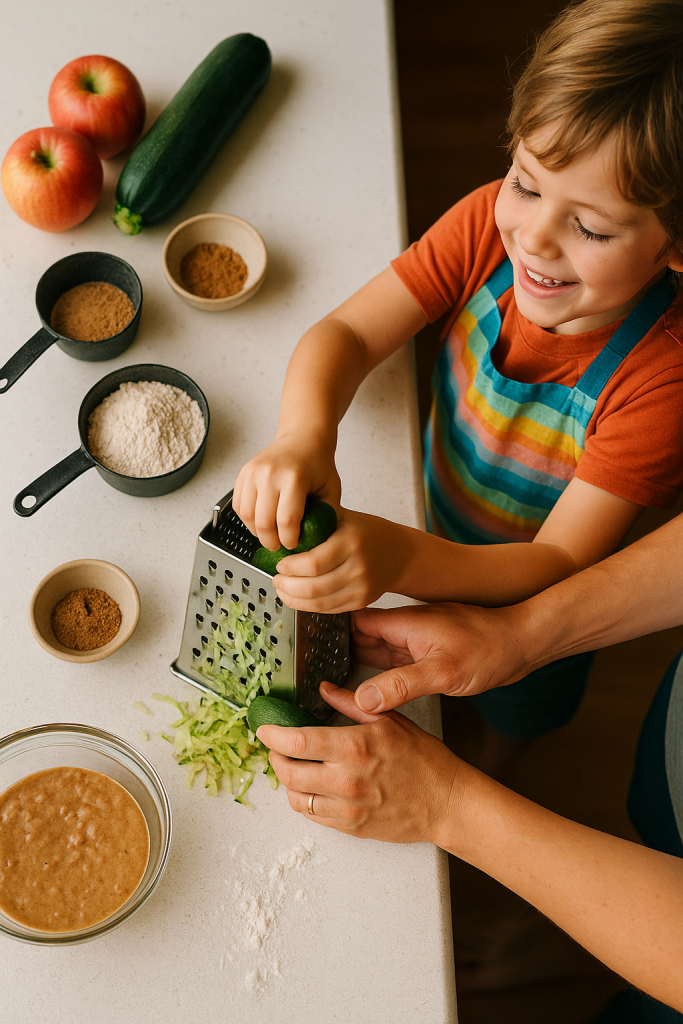
Moving Forward with Plant-Based Baking
This apple zucchini bread opened doors I didn’t know existed in my kitchen. It proved that plant-based baking can deliver everything traditional baking offers—moisture, flavor, and satisfaction—while aligning with my values of health and sustainability. The confidence I gained from perfecting this recipe inspired me to experiment with other whole-food baking projects, each one expanding my repertoire and reinforcing that restrictive diets aren’t necessary for true well-being.
I encourage you to try this recipe, especially if you’re new to plant-based cooking or skeptical about healthy baking. Follow it precisely the first time to understand how these ingredients work together. Then make it yours through the variations I’ve suggested or your own creative impulses. Pay attention to how you feel after eating it compared to conventional baked goods—notice sustained energy rather than sugar crashes, satisfaction without heaviness.
Most importantly, trust that choosing nourishing ingredients doesn’t mean sacrificing pleasure. Every time I slice into a fresh loaf, inhale its warm spices, and taste that perfect combination of tender crumb and sweet apple chunks, I’m reminded that the best food nourishes both body and soul. That’s the promise of plant-based baking, and this bread delivers it beautifully.
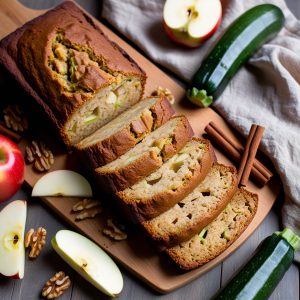
*We may earn a commission for purchases made using our links. Please see our disclosure to learn more.

